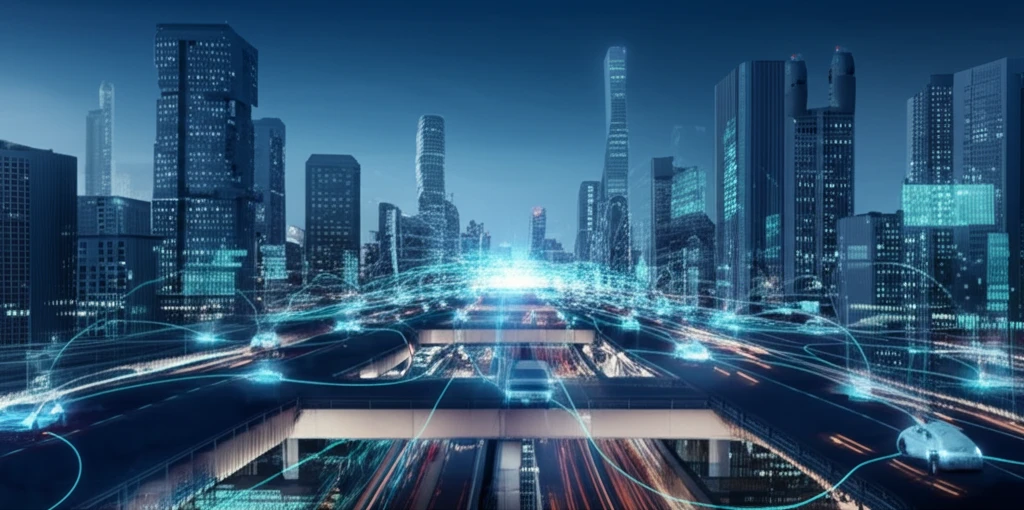
Beyond Real-Time: How Connected Vehicle Data is Reshaping Transportation
"Discover the hidden potential of connected vehicle data for long-term transportation planning, infrastructure management, and future innovations."
Imagine a world where every vehicle is seamlessly connected, constantly sharing data to improve safety, traffic flow, and environmental sustainability. This is the vision of the connected vehicle (CV) environment, and it's closer than you think. While much of the focus has been on real-time applications like collision avoidance, the true potential of CV data lies in its ability to revolutionize long-term transportation strategies.
Traditionally, transportation agencies have relied on fixed sensors and private data providers to gather traffic information. However, CV technology offers a wealth of detailed, disaggregated data about vehicle status, location, and surrounding conditions. This information can be used to unlock new insights and improve a wide range of non-real-time applications, from transportation planning to infrastructure maintenance.
This article delves into the exciting possibilities of using CV data for non-real-time applications. We'll explore how this data can be archived, analyzed, and used to create safer, more efficient, and sustainable transportation systems for the future.
Unlocking the Potential: Non-Real-Time Applications of Connected Vehicle Data

Connected vehicle (CV) data offers a transformative opportunity to enhance transportation planning. Unlike traditional methods, CVs provide detailed, trip-specific data, enabling a more nuanced understanding of travel patterns and behaviors. This granular data allows for the development of activity-based travel demand models, which are more accurate and adaptable than the traditional four-step models. As CV penetration increases, the richness and reliability of this data will only continue to grow.
- Early detection of pavement distress: CV data can identify subtle changes in road conditions before they become major problems.
- Improved resource allocation: By providing a more accurate assessment of infrastructure needs, CV data can help agencies prioritize maintenance and repairs.
- Reduced costs: Automating data collection with CVs can significantly reduce the cost of traditional pavement monitoring methods.
The Road Ahead: Overcoming Challenges and Embracing the Future of CV Data
While the potential of CV data is enormous, there are challenges to overcome before it can be fully realized. These challenges include ensuring data security and privacy, developing the necessary infrastructure for data collection and storage, and fostering collaboration between public and private stakeholders. By addressing these challenges, we can pave the way for a future where CV data transforms transportation and creates safer, more efficient, and sustainable communities.
